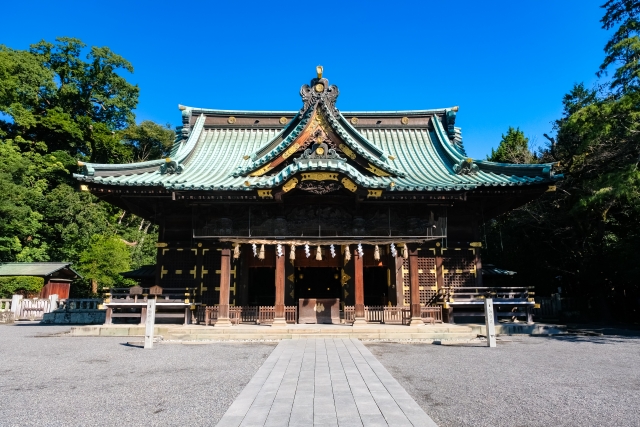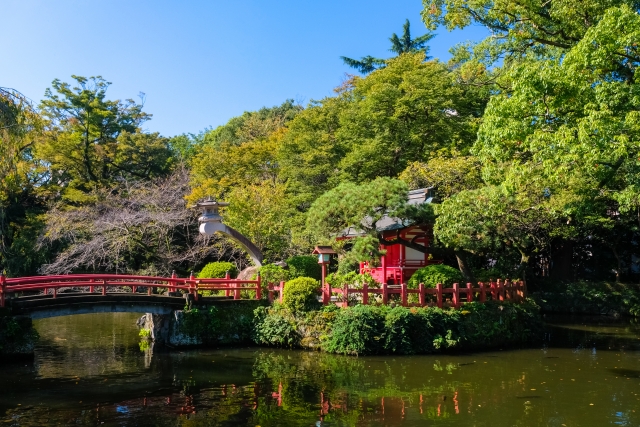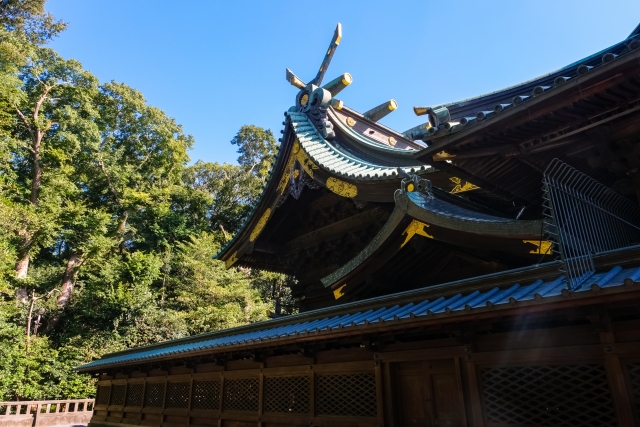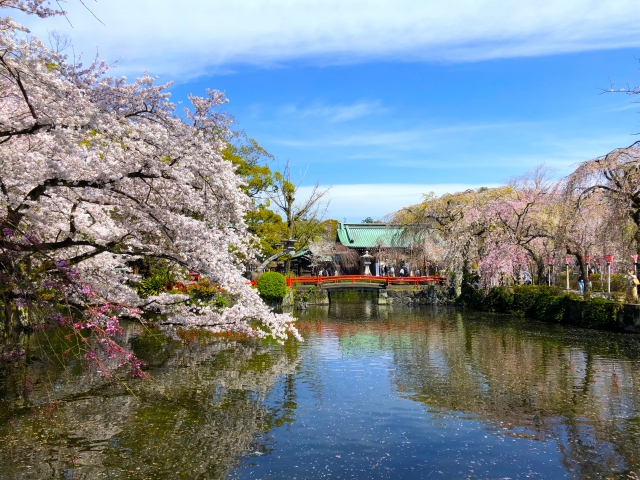
心
2024-06-21
The Meaning of a Shrine, and Why “Mishima Taisha” is Important Today.
No items found.
I saw the name “Mishima Taisha” and it caught my interest, so I watched a video about it.
Mishima Taisha is a shrine I have been visiting since I was a child for events like miyamairi (newborn baby shrine visit) and Shichi-Go-San (a traditional rite of passage for children at the ages of 3, 5, and 7). My daughters were also born near this shrine, and we took them there for their miyamairi as well.
Mishima Taisha is one of the most significant Shinto shrines in Japan. Located in Mishima City, Shizuoka Prefecture, it holds historical, cultural, and spiritual importance for several reasons.
Why is Mishima Taisha so important now?
Japanese people often visit shrines during important life events and seasonal milestones. While many Japanese consider themselves non-religious, visiting shrines remains a deeply ingrained cultural habit. This practice reflects a broader, more nuanced spiritual outlook.
Many Japanese identify as non-religious, meaning they do not adhere to a specific organized religion. However, this does not equate to atheism. Non-religious Japanese do not necessarily reject the existence of deities. Instead, they often believe in a form of spirituality that recognizes the presence of unseen forces or entities that are beyond concrete definition or representation.
A common phrase in past Japan was, “お天道様が見ているよ” (“Otentou-sama ga miteiru yo”), which means “the sun god is watching.” This saying instilled a sense of moral accountability, suggesting that both good and bad deeds are observed by a higher power, fostering a sense of reverence and respect among children.
The concept of “八百万の神” (Yaoyorozu no Kami), meaning “eight million gods,” encapsulates the Japanese belief that gods inhabit all things. This includes not only traditional gods of mountains, seas, and rocks but also a general sense that the divine can reside in any aspect of the natural world. This belief is so intrinsic that it is not taught explicitly but rather absorbed naturally by Japanese people. For example, the song “Toire no Kamisama” (The Toilet God) became a hit, reflecting the cultural notion that even mundane places can have a spiritual presence.
Importantly, Japanese spirituality does not assert the exclusivity of any single deity. There is no sense of denying the existence or validity of other gods. This inclusive approach to spirituality emphasizes harmony and acceptance, allowing for a broad spectrum of beliefs and practices without conflict.

I don’t know much about religion. Like many typical Japanese people, I visit shrines for hatsumode (New Year’s visit) and when I want to make a wish. At funerals, I listen to the Buddhist sutras while praying, and when I visit relatives in the countryside, I pay my respects at the family Buddhist altar.
I have friends who are Christians or members of religious groups. So, even though I’m not well-versed in religion, I have a basic understanding.
Organizations, including religious ones, cannot operate solely on pure intentions. Recently, I heard that Tsurugaoka Hachimangu in Kamakura separated from the Association of Shinto Shrines. This suggests that religion, as an organization, is not sustained by pure faith alone.
Therefore, I am very interested in the origins of Shinto before the establishment of shrines across Japan. I don’t believe the authority lies in the buildings or in the names of the gods themselves.
Still, humans need something concrete and visible. Shrines serve as symbols, and myths, like the story of Amaterasu being the supreme deity, are passed down through generations.
Here is a video about Mishima Taisha. Whether you have a specific religion or not, I hope you can appreciate this perspective.
When visiting a shrine, people go there with serious intentions to pray. To genuinely pray, it’s important to know which deity is enshrined there. The deities at these shrines, especially across Japan, are considered to be connected to those who protect all of humanity.
Mishima Taisha enshrines powerful deities believed to have the ability to transform the current chaotic state of the world for the better. Many Japanese people feel that Japan, and indeed the world, is in a precarious state, which is why shrine visits are important now.
At Mishima Taisha, the primary deities enshrined are Ooyamazumi no Kami and Kotoshironushi no Kami, collectively known as Mishima Myojin. Japanese deities are broadly categorized into two types: the heavenly deities (Amatsukami) and the earthly deities (Kunitsukami). Both Ooyamazumi no Kami and Kotoshironushi no Kami are Kunitsukami.
The current importance of visiting these deities in Japan lies in the need to reconnect with the country’s natural and spiritual roots. The power to effect change on Earth is believed to rest with the Kunitsukami rather than the Amatsukami.
This concept is often referred to as “Yamato-damashii” 大和魂 (the spirit of Japan). Ooyamazumi no Kami is considered to protect the foundational spirit of Japan, which is invisible yet deeply significant.
There is another Mishima Shrine in Ehime Prefecture, where Ooyamazumi no Kami is called Watashi-no-Okami. In ancient Yamato language, “watashi” was used not just to refer to oneself but as a symbol of a collective spirit inherited and harmonized from the Jomon period. This represents the essence of being Japanese.
“Watashi” (I) means more than just the individual self; it signifies a transcendental existence. In Japanese, “jibun” 自分also means “myself,” which literally translates to “It separates (分)itself(自).” Understanding this concept can help one grasp the ideas of Yaoyorozu no Kami (the eight million gods) and Shinto, providing clarity about the world.
The video also explains why the current state of Japan and the world is troubling, pointing to excessive individualism summed up by the phrase “Now, money, and me only.” It warns against this extreme individualism and concludes with a call for reflection and change.

Why Mishima Taisha Now?
The reason why Mishima Taisha is particularly significant now is because it addresses the mindset that Japanese people most urgently need to change: the concept of “watashi” (私), or “I.”
The current understanding of “watashi” as individualistic—where one’s sole concern is their own well-being—needs to be transformed. Historically, people expressed this concept with the characters “和多志” (also pronounced “watashi”), where “和” (wa) means harmony, “多” (ta) means many, and “志” (shi) means will or intention.
The Japanese language possesses a profound and mysterious power in its sounds, where each word can carry multiple layers of meaning. This is exemplified in “watashi” as “和多志,” which also relates to the deity Ooyamazumi no Kami.
This ancient Japanese trait of coming together in times of crisis, of uniting and helping one another without explicit direction, stems from this deeper understanding of “watashi”—a sense of self that is inherently connected to the community and the collective spirit.
This communal spirit, the ability to unite and protect one another, is not something learned but is ingrained in the Japanese consciousness. It is this sense of “watashi” that needs to be consciously embraced and reawakened in modern times.
We, living in the present day, must consciously inherit and awaken this sense within ourselves. This is why Mishima Taisha, and the deities enshrined there, are so important now—they help us reconnect with this ancient, collective spirit and reorient our understanding of “I” from individualism to a sense of communal harmony and shared purpose.
Mishima Taisha enshrines the deity that protects the concept of “watashi私I ” = “watasi 和多志.” To change the current situation, the fundamental, underlying consciousness must change.
This idea is discussed further in the following way:
Transcending the ego inherent in “watashi” (私) is a personal challenge for each individual. The ultimate goal for all humanity is to move beyond this self-centered concept.
Shinto teaches that each person harbors a soul. The purpose of human life—from birth to death—is for the soul to manifest from the other world into this one, residing in the body to refine itself. Every event, whether joyous or unpleasant, is viewed as an opportunity to polish the soul.
So, what is the ultimate goal of refining the soul? It is to embody and leave behind the spirit of “watasi” (和多志), which emphasizes collective harmony and purpose.
The significance lies in how many people one can share this spirit and purpose with throughout their life. The crucial aspect is not merely sharing any goal, but rather sharing a high, noble aspiration with others. This shared high aspiration is what truly matters.
Mishima Yukio(1925 – 1970) author, poet, playwright, actor, model, Shintoist, nationalist, passionately advocated for the shared spirit and aspiration that Japanese people once held. Interestingly, his name “Mishima” is derived from Mishima Taisha.
The video emphasized that the sense of unity and high aspiration essential for the Japanese people today can be found at Mishima Taisha.
In the video, there was no mention of Kotoshironushi no Kami, one of the two deities enshrined at Mishima Taisha. I don’t know much about this deity either, but I recall reading that Kotoshironushi no Kami is connected to the Awa Imbe clan, suggesting a link between Awa Imbe and Mishima.
When I lived in Tokushima for two years, I noticed a place called Mishima and found it intriguing.
I was born in Numazu, right next to Mishima City, and spent most of my school years in Mishima. The historical site of Hiruga-kojima, where Minamoto no Yoritomo was exiled, was right along my route to high school.
I had no interest in history, shrines, or myths during that time. However, after the 3.11 earthquake, I suddenly became interested in these subjects, leading me to my current perspective.

I myself do not often actively visit shrines.
Because ultimately, I feel that what is most important is in the consciousness of each individual. So there is really no need to go anywhere, do anything with anyone, and then join hands with outside deities.
When you know this not only with your senses, but also with the depths of your heart, you will be able to see the true “I.” But the path to that point is never easy.
I recognize that the path to this point requires patience and concentration.
For this reason, I believe that “soul polishing,” as Shintoists call it, is so important in our daily lives.